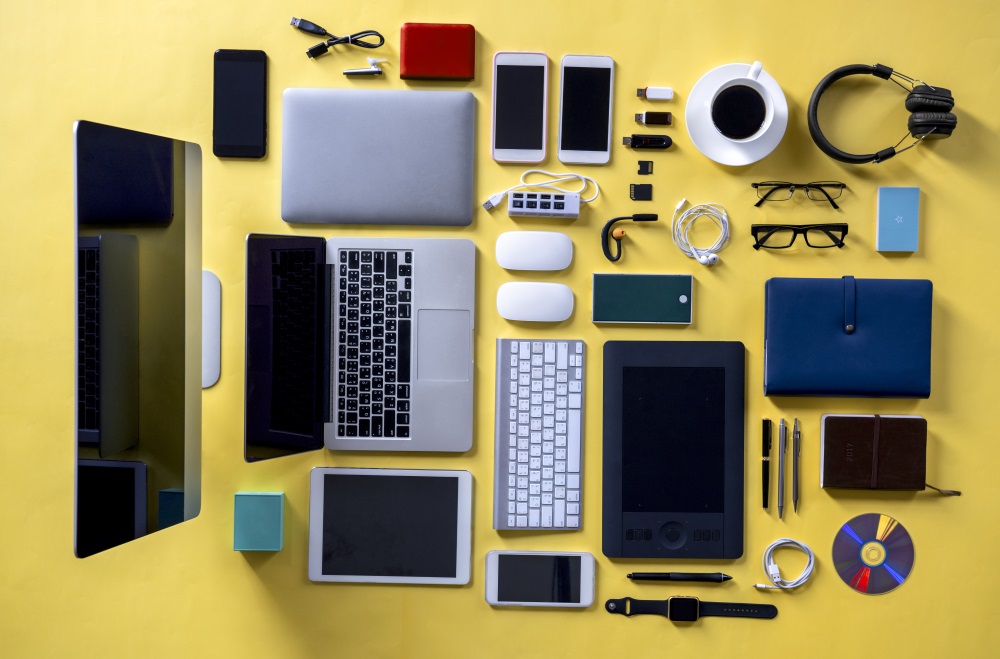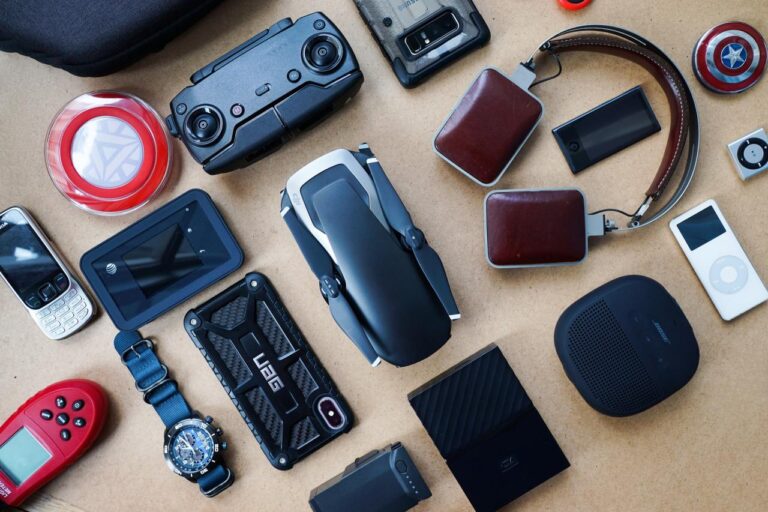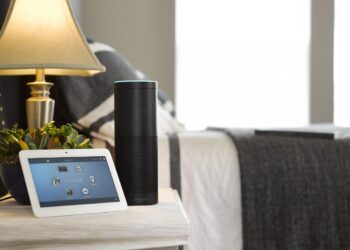The aesthetics of tech gadgets have evolved into a critical differentiator, transforming devices from mere functional tools into objects of desire, statements of identity, and seamless extensions of our digital lives. Far from being a superficial concern, design in technology is a powerful force that dictates user experience, brand perception, and ultimately, market success. This comprehensive article delves into the profound shifts and innovations defining the aesthetic future of gadgets, exploring the forces driving their evolution, highlighting groundbreaking trends, and forecasting upcoming trajectories. Understanding these innovations isn’t just about appreciating sleek lines; it’s about discerning the critical elements that lead to widespread adoption, competitive advantage. From the minimalist elegance of smartphones to the immersive interfaces of AR headsets, the impact of forward-thinking tech gadget aesthetics is ubiquitous and transformative, redefining our relationship with technology.
Historically, early tech gadgets prioritized function over form. Think of the bulky desktop computers of the 1980s or the clunky mobile phones of the early 90s; their design was often an afterthought, dictated by internal components and manufacturing limitations. However, as technology became more sophisticated and accessible, consumer expectations shifted. Companies like Apple revolutionized the industry by demonstrating that design could be a primary selling point, elevating products to aspirational status. The 21st century has accelerated this transformation, with factors like ubiquitous connectivity, advanced manufacturing, and a global demand for personalization propelling tech gadget aesthetics into mainstream consciousness. Tech designers are no longer just engineers; they are artists, psychologists, cultural commentators, and material scientists, crafting objects that resonate with users on both a practical and emotional level. This continuous pursuit of seamless integration, intuitive interaction, and emotional connection is the driving force behind the fascinating breakthroughs we are witnessing today.
Driving Forces Behind Tech Aesthetic Evolution

Several powerful currents are converging to redefine the purpose and practice of tech gadget design, pushing it toward increasingly intelligent, integrated, and user-centric forms.
A. Miniaturization and Increased Performance:
* Shrinking Components: Advances in semiconductor technology, battery density, and material science allow for increasingly powerful components to be packed into smaller, thinner, and lighter devices. This frees up designers to create more elegant and ergonomic forms.
* Enhanced Capabilities: Despite smaller sizes, gadgets are becoming more powerful, capable of complex computations, high-resolution displays, and advanced sensor integration, pushing designers to create interfaces that manage this complexity elegantly.
* Wearable Technology: Miniaturization is the cornerstone of wearables (smartwatches, fitness trackers, smart rings), enabling them to be discreet, comfortable, and seamlessly integrated into daily life.
B. Ubiquitous Connectivity and Ecosystems:
* Internet of Things (IoT): The proliferation of connected devices means gadgets are no longer standalone. Design must consider how devices communicate with each other, with cloud services, and with users across a connected ecosystem, prioritizing seamless interoperability and intuitive control.
* Cloud Integration: Reliance on cloud-based services reduces the need for extensive on-device storage or processing, leading to simpler, sleeker hardware designs.
* Cross-Device Experience: Designers are increasingly focused on creating a consistent and cohesive aesthetic and user experience across multiple devices (phone, tablet, laptop, smartwatch, smart home hub), rather than just individual products.
C. Human-Centric Design and Ergonomics:
* Comfort and Usability: Design is increasingly driven by how people naturally interact with objects. This means prioritizing comfortable grip, intuitive button placement, balanced weight distribution, and materials that feel pleasant to the touch.
* Accessibility: A growing emphasis on designing gadgets that are usable by people of all abilities, including those with visual, auditory, or motor impairments. This influences physical design (e.g., tactile feedback, larger buttons) and software interfaces.
* Emotional Connection: Designers aim to create gadgets that not only perform well but also evoke positive emotions – joy, calm, inspiration – through their aesthetics, sounds, and haptic feedback.
D. Sustainability and Ethical Considerations:
* Eco-Friendly Materials: A strong push towards using recycled plastics, ethically sourced metals, bio-based polymers, and easily recyclable components in gadget construction.
* Modularity and Repairability: Designing gadgets that are easier to disassemble, repair, and upgrade, extending their lifespan and reducing electronic waste (e-waste). This challenges traditional sealed designs.
* Energy Efficiency: Designing components and software that consume less power, leading to longer battery life and reduced overall energy footprint.
* Supply Chain Transparency: Consumers increasingly demand to know the origin of materials and the labor conditions involved in manufacturing, influencing brand integrity and design choices.
E. Artificial Intelligence (AI) and Machine Learning (ML):
* Personalization: AI enables gadgets to learn user preferences, anticipate needs, and adapt their interface or functionality accordingly, leading to highly personalized user experiences.
* Conversational Interfaces: The rise of sophisticated voice assistants (Siri, Google Assistant, Alexa) is leading to devices designed primarily for voice interaction, minimizing physical controls and screens.
* Predictive Design: AI tools can assist designers in optimizing layouts, predicting user behavior, and even generating aesthetic variations, accelerating the design process.
* Ambient Intelligence: Designing gadgets that fade into the background, operating intelligently without constant explicit user input, seamlessly integrating into daily life.
Transformative Tech Gadget Aesthetic Trends
The following trends represent the cutting edge of tech gadget aesthetics, moving beyond conventional forms to offer highly integrated, intuitive, and emotionally resonant experiences.
A. Seamless Integration and Minimalist Forms:
* Invisible Technology: Gadgets are designed to be less obtrusive, blending into their environment or becoming almost invisible when not in use. This leads to clean lines, flush surfaces, and hidden ports.
* Unified Materials: Using a consistent material palette (e.g., unibody aluminum, glass, soft-touch polymers) and minimal seams to create a sense of singular, sculpted form.
* Elimination of Buttons and Ports: Relying more on touch interfaces, voice control, wireless charging, and universal connectivity (e.g., USB-C) to simplify physical design.
* Monolithic Aesthetics: Designing gadgets as single, cohesive blocks of material, often with a smooth, pebble-like feel, emphasizing purity and simplicity.
B. Sustainable Materials and Circular Design:
* Recycled Content: Increased use of post-consumer recycled (PCR) plastics, recycled aluminum, and rare earth metals.
* Bio-based Polymers: Exploration of materials derived from plants (e.g., bioplastics from corn or sugar cane) as alternatives to fossil fuel-based plastics.
* Modular Components: Designing devices with easily replaceable batteries, screens, or other modules to extend lifespan and facilitate repair by consumers or service centers.
* Less is More in Packaging: Minimalist packaging made from recycled, recyclable, or compostable materials, often designed to be easily opened and free of excess plastic.
* Carbon Footprint Transparency: Brands communicating the environmental footprint of their products, from sourcing to disposal, influencing consumer choice.
C. Customization and Personalization:
* Color and Finish Options: Offering a wider array of appealing colors, textures (matte, glossy, fabric-wrapped), and material finishes beyond standard black/silver/white.
* Modular Accessories: Ecosystems of interchangeable accessories (phone cases, watch bands, headphone covers) that allow users to personalize their devices.
* Software-Driven Aesthetics: Customizable digital watch faces, home screen widgets, and ambient display modes that allow users to personalize the on-screen aesthetic of their devices.
* Mass Customization: Advanced manufacturing techniques like 3D printing enabling brands to offer unique engravings, patterns, or even slightly custom forms for individual customers.
D. Haptic Feedback and Multi-Sensory Experiences:
* Refined Haptics: Advanced haptic motors providing nuanced, realistic tactile feedback that enhances user interaction (e.g., simulating button presses, texture changes, or specific notifications).
* Auditory Cues: Carefully designed sound profiles (e.g., gentle clicks, subtle chimes) that complement visual and haptic feedback, creating a cohesive and satisfying user experience.
* Temperature and Scent (Emerging): Explorations into gadgets that can subtly change temperature or release scents in response to user input or contextual data, adding new dimensions to interaction (e.g., VR haptic gloves that simulate heat).
* Emotional Resonance: Leveraging multi-sensory feedback to evoke specific emotions or enhance immersion in entertainment or communication.
E. Immersive and Blended Reality Interfaces:
* Seamless Displays: Devices with minimal bezels, edge-to-edge screens, and even under-display cameras, aiming for a truly immersive visual experience.
* Foldable and Rollable Screens: Flexible display technologies allowing for devices that can transform their form factor, offering larger screens in compact packages, influencing the entire design language.
* Augmented Reality (AR) Devices: AR glasses and headsets are becoming smaller, sleeker, and more fashion-forward, designed for all-day wear and seamless blending of digital information with the physical world.
* Mixed Reality (MR) Integration: Gadgets that seamlessly blend virtual objects with real-world environments, requiring sophisticated optical design and ergonomic comfort for prolonged use.
* Spatial Computing: Designing for interactions within a 3D physical space where virtual objects behave like real ones, influencing the interface design paradigms.
Impact Across Diverse Gadget Categories

These aesthetic innovations are permeating various segments of the tech market, fundamentally altering what devices look like and how they are used.
A. Smartphones and Tablets:
* Sleeker Profiles: Thinner bezels, lighter materials, and more seamless body constructions.
* Advanced Camera Modules: Camera bumps are becoming integrated or less obtrusive, or more aesthetically refined.
* Foldable/Rollable Designs: Pioneering new form factors that challenge the traditional flat slab, offering larger screen real estate in pocketable formats.
* Eco-conscious Construction: Increased use of recycled aluminum, glass, and sustainable packaging.
* Personalized Skins and Cases: A vast market for accessories that allow users to express individuality.
B. Wearable Technology (Smartwatches, Fitness Trackers, AR Glasses):
* Fashion Integration: Wearables are increasingly designed to be indistinguishable from traditional watches or eyewear, blending seamlessly with personal style.
* Comfort and Ergonomics: Lightweight materials, flexible straps, and contoured forms for all-day wear.
* Biometric Sensors: Discreet integration of health sensors into the device body or strap, without compromising aesthetics.
* Augmented Reality Eyewear: The challenge of making AR glasses socially acceptable and aesthetically appealing for everyday use, mimicking traditional eyewear.
C. Smart Home Devices:
* Subtle Integration: Devices designed to blend into home decor, often with fabric finishes, wood accents, or neutral colors, rather than standing out as purely technological objects.
* Minimalist Control Interfaces: Relying on voice control, touch-sensitive surfaces, or app-based interaction to minimize physical buttons and screens.
* Ambient Displays: Smart displays that can show contextual information, art, or photos when not actively being used, serving as decorative elements.
* Sustainable Materials: Using recycled plastics or natural fibers in smart speaker coverings or device casings.
D. Laptops and Desktop Peripherals:
* Ultra-Thin and Lightweight: Continuous efforts to reduce thickness and weight for portability, especially for laptops.
* Premium Materials: Extensive use of aluminum, magnesium alloys, and glass for a premium look and feel.
* Minimalist Keyboards and Trackpads: Streamlined designs with precise haptic feedback and often backlighting.
* Ergonomic Peripherals: Mice and keyboards designed for comfort and long-term use, often with customizable aesthetics.
* Sustainable Sourcing: Brands promoting the use of recycled materials in their computer chassis and components.
E. Gaming Consoles and Accessories:
* Bold and Sculptural Forms: Consoles often feature distinct, architectural forms that stand out, reflecting their powerful internal components.
* Customizable Lighting (RGB): Extensive use of customizable RGB lighting on consoles, controllers, and peripherals to enhance the gaming aesthetic and personalization.
* Haptic Feedback Controllers: Advanced controllers with sophisticated haptics that provide immersive tactile feedback, enhancing gameplay.
* Ergonomic Design: Controllers shaped for comfortable, extended gaming sessions.
* Themed Editions: Limited edition consoles and accessories with unique aesthetic designs tied to specific games or franchises.
Challenges and Ethical Considerations
While tech gadget aesthetic innovations offer immense potential, their implementation comes with significant challenges and ethical dilemmas that designers and manufacturers must navigate responsibly.
A. Sustainability vs. Desirability:
* Planned Obsolescence: The tension between designing highly desirable, rapidly evolving gadgets that encourage frequent upgrades and designing for longevity, repairability, and reduced e-waste.
* Sealed Designs: Many sleek, minimalist designs are difficult or impossible for consumers to repair, forcing costly professional repairs or early replacement.
* Resource-Intensive Production: The production of cutting-edge gadgets often relies on mining rare earth minerals and complex manufacturing processes with significant environmental footprints.
B. Data Privacy and Security:
* Ubiquitous Sensors: Gadgets embedded with numerous sensors (cameras, microphones, biometric sensors) collect vast amounts of personal data, raising significant privacy concerns.
* “Always On” Devices: Voice assistants and smart home devices that are always listening or connected raise questions about constant surveillance and data security.
* Secure by Design: Designers must collaborate with cybersecurity experts to embed robust security features into products from the initial concept phase, prioritizing user privacy.
C. Aesthetics vs. Accessibility:
* Minimalist Interfaces: While sleek, overly minimalist interfaces with hidden buttons or gesture-only controls can sometimes be less intuitive or accessible for users with cognitive or motor impairments.
* Screen-Only Interaction: Reliance on touchscreens can exclude users who prefer tactile feedback or have visual impairments, highlighting the need for alternative interaction methods.
* Cost of Innovation: Advanced materials and cutting-edge designs can increase product costs, potentially widening the digital divide for those with limited budgets.
D. Environmental Impact of Production and Disposal:
* E-Waste Crisis: The rapid pace of gadget obsolescence contributes significantly to the global e-waste crisis, leading to toxic landfill waste and loss of valuable materials.
* Recycling Infrastructure: A lack of robust global infrastructure for recycling complex electronic components remains a major barrier to true circularity in tech.
* Manufacturing Pollution: The environmental impact of raw material extraction, chemical processing, and energy-intensive manufacturing.
E. Human Connection and Digital Fatigue:
* Screen Addiction: Designing highly engaging and visually stimulating gadgets can inadvertently contribute to screen addiction and digital fatigue.
* Blurring Boundaries: The seamless integration of tech into daily life can make it harder for users to disconnect and find balance.
* Emotional Manipulation: The use of design (e.g., through notifications, haptic feedback) to subtly influence user behavior in ways that may not be in their best interest.
Conclusion
The aesthetics of tech gadgets are no longer a mere afterthought; they are a central pillar of innovation, driven by an intricate dance between technological progress, human desire, and ecological responsibility. From seamless minimalist forms and the integration of sustainable materials to immersive AR experiences and the subtle power of haptic feedback, the breakthroughs are fundamentally reshaping our interactions with the digital world. The future promises gadgets that are not just smart, but truly intuitive, beautiful, emotionally resonant, and ethically responsible, seamlessly enhancing our lives while treading lightly on the planet. For designers and manufacturers, this era presents immense opportunities to innovate, connect, and leave an indelible mark on culture, proving that technology, when designed with intention and conscience, can be a profound force for positive change.










